The Alphabet for Autistic Learners
>> Free alphabet-learning resources for autistic learners <<
>> Limited-time discount for autistic learners <<
Alphastrokes for autistic children
Alphastrokes resources provide an easy way for autistic children to learn …
- correct letter formation and penmanship
- letter-word associations (based on initial sounds of words)
Alphastrokes resources provide a foundation for literacy by facilitating the following skills:
- fine motor skills, dexterity, and penmanship
- differentiating upper- and lowercase
- distinguishing confusing letters such as b and d or p and q
- associating letters with their corresponding sounds (phonemic awareness)
Why Alphastrokes is ideal for autistic children
Because attention to detail and appreciation of routines and patterns are characteristic of autistic children, Alphastrokes is an especially effective resource for teaching letter formation to these special learners. The numbered arrows map out each letter in a consistent flow that can appeal to autistics, especially those who have already developed an appreciation of numbers (numbers 1 through 4 apply to the letter strokes).
“Alpha Strokes offers two fonts, flash cards, and a video series. We downloaded the font that includes numbers, arrows, and dots to help [our autistic son] Bryce improve his writing skills. Being very visual AND hyperlexic, it has been helpful for him to see numbered instructions for each stroke.”
– Parenting Autism (Podcast “E29: Balancing Life with Gratitude: New Behaviors, Therapy Updates, and Helpful Resources”)
How to teach the letters
Each learner should first become familiar with identifying the starting position for each letter: the ring where arrow number 1 begins. At first, the videos and flashcards are ideal for teaching the patterns.
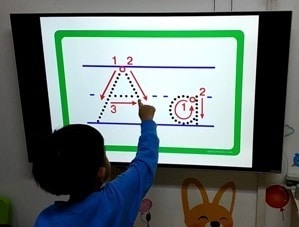
A student learns the stroke sequences for the letter Aa with the Alphastrokes flashcards on a TV screen (from a PDF file)
1.) The student should first be encouraged to locate the starting ring and place his or her finger on it.
2.) He or she should then be guided to motion the appropriate index finger (left index finger for lefthanded; right index finger for righthanded) along the dotted line to the end of the first stroke, saying the number “one” aloud.
3.) At this point, the student should be encouraged not to lift his or her finger as he or she identifies the second stroke. Once the second stroke is identified, the student should be encouraged to proceed by motioning the index finger along that stroke, saying the number “two” aloud.
4.) Show the student how to proceed to complete all of the strokes of the letter, saying each stroke number aloud.
5.) Use positive reinforcement (a high five, etc.) upon completion to associate a positive emotion with accomplishing each letter.
Note: The student should be encouraged not to lift the index finger (or pencil) between strokes—only when necessary: The finger or pencil should only break a continuous flow when forming many of the uppercase letters and lowercase letters f, k, t, x, and y (and, of course, i and j).
Once students have become familiar with the process of forming letters and have been sufficiently introduced to the letters of the alphabet with the flashcards and/or videos, students are ready to begin practicing with a pencil and paper. This will reinforce the formation of individual letters and facilitate fine motor skills, dexterity, and penmanship. Students should first be taught correct pencil grip (three-finger grip using the thumb, index and middle finger).

A student prepares to write the letter Aa in his Alphastrokes workbook
6.) The Alphastrokes workbook is ideal for young learners to practice forming the letters on paper.
7.) Once students are ready to hone fine motor skills, the Alphastrokes font is ideal for producing custom worksheets, upon which you can control the size of the lettering and focus on specific letters and/or words. Using words that your child/student has developed a personal affinity for will make the exercise more engaging and build upon pre-existing mental schemas.
8.) There is also a more basic version of the Alphastrokes font that has only the starting positions, without the direction arrows, for students who are ready to take their penmanship practice to the next level “without the training wheels,” so to speak. This font is available for free and comes bundled with the full version of the font (available for purchase here).
Alphastrokes Products
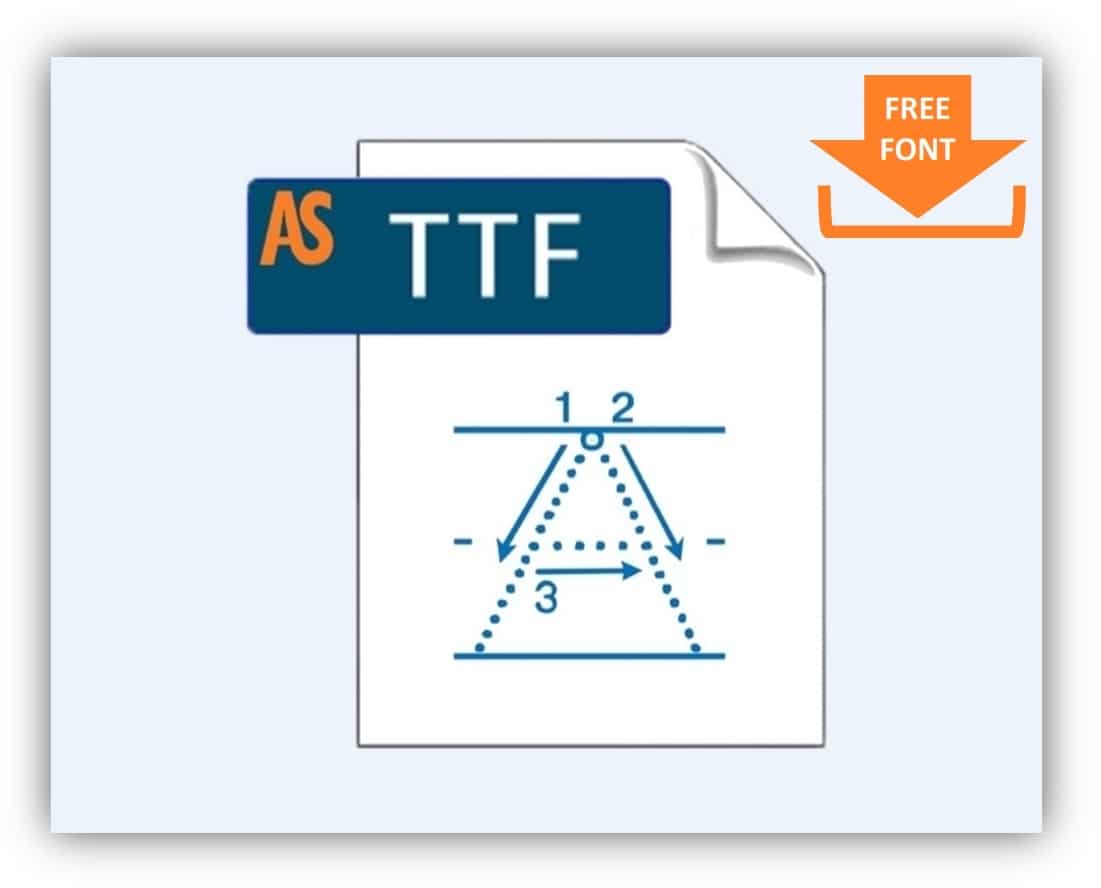 |
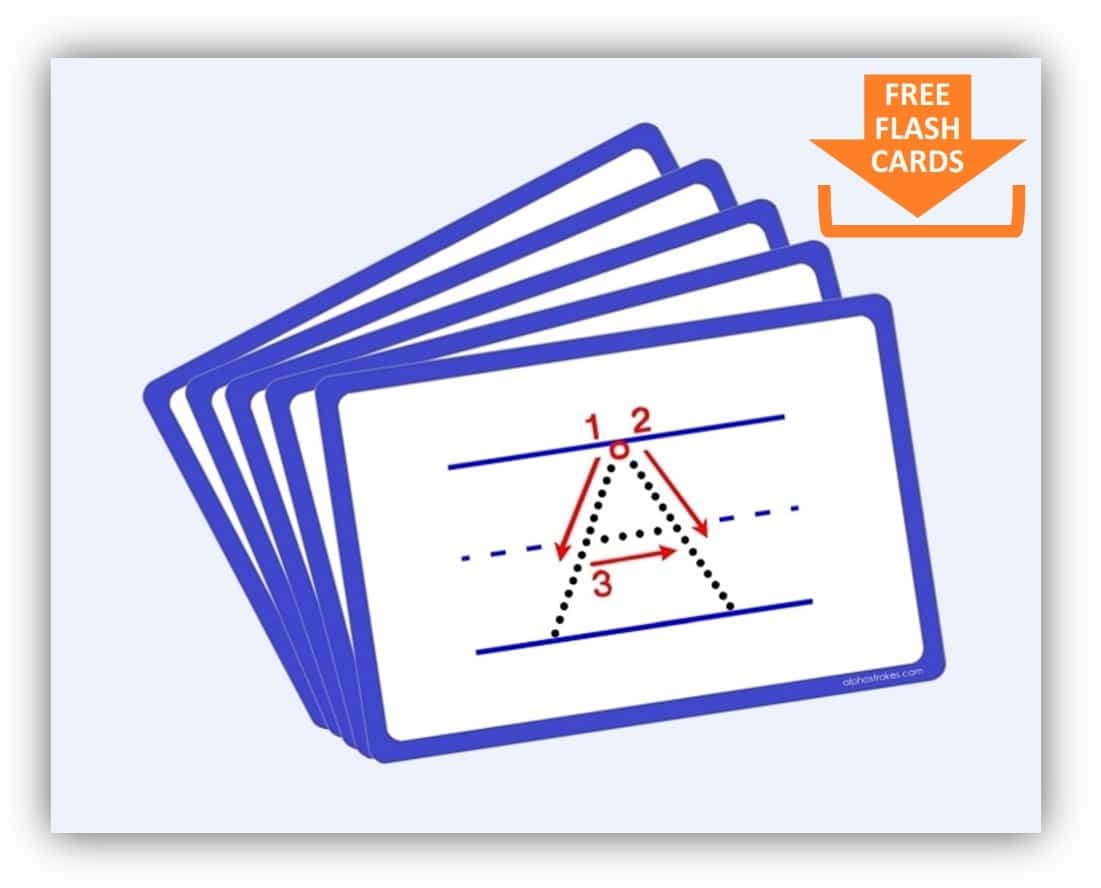 |
|
| Alphastrokes Font The best kindergarten font on the web.
|
Alphastrokes Flashcards Learn correct stroke orders.
|
|
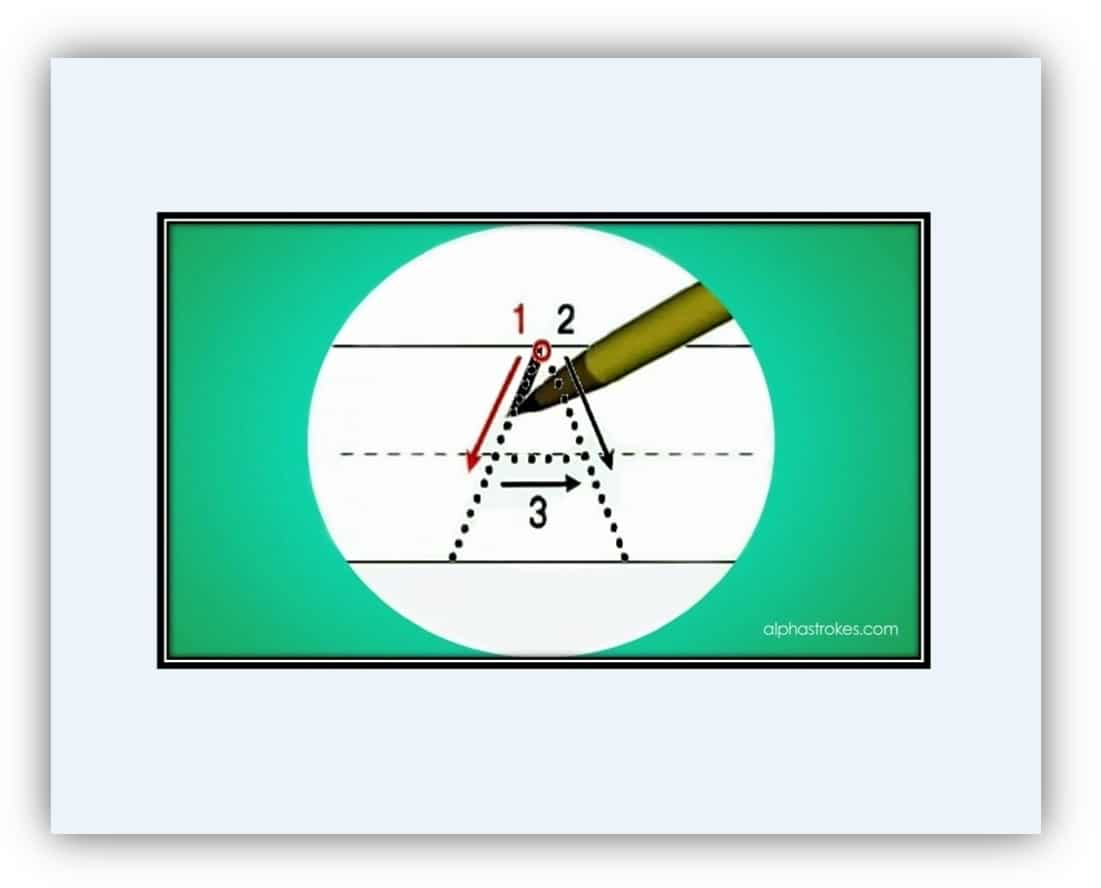 |
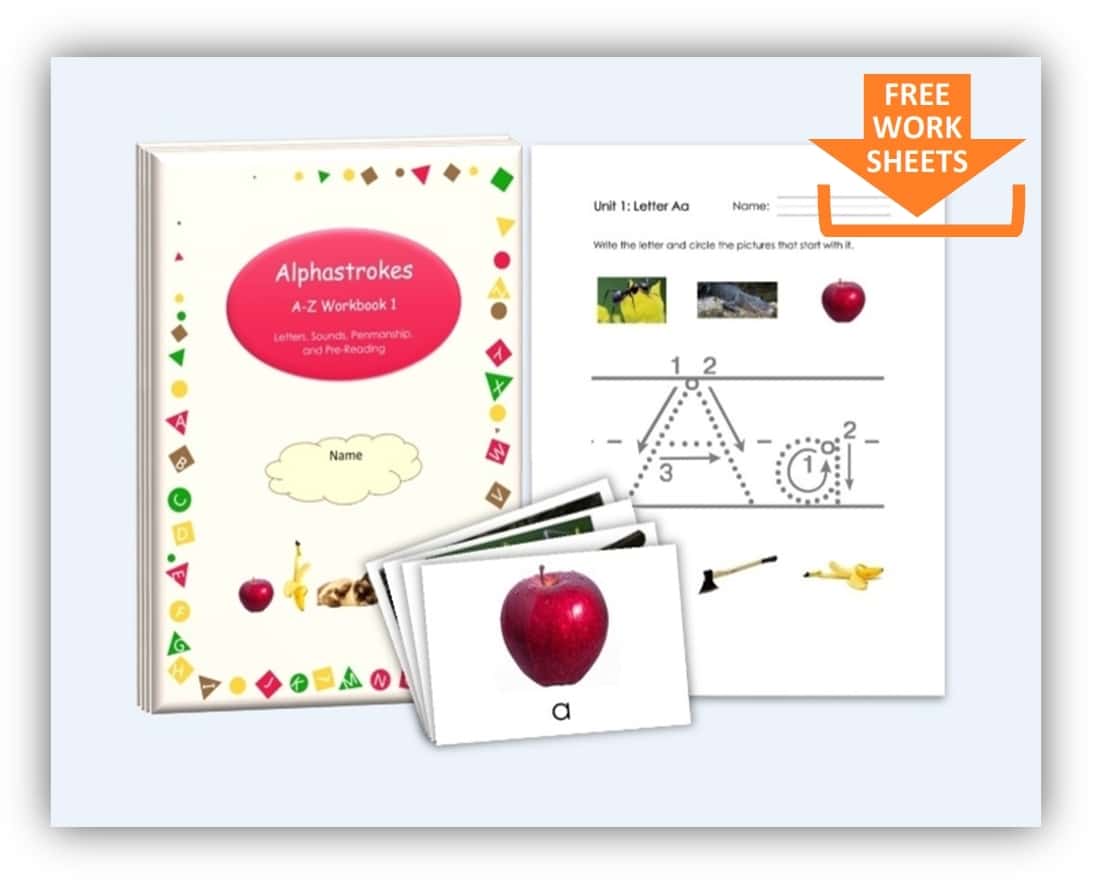 |
|
| Alphastrokes Videos Learn stroke orders with captivating videos.
|
Alphastrokes Workbook Learn letters, sounds, penmanship, and pre-reading.
|
Discount for autistic learners
Click the link below for your coupon for 30% off any and all Alphastrokes products.
This is a limited-time offer. Grab your coupon now, while it’s available.
>> Click here for your 30%-discount coupon <<
Alphastrokes Font Alphastrokes Flashcards Alphastrokes Videos Alphastrokes Workbook
